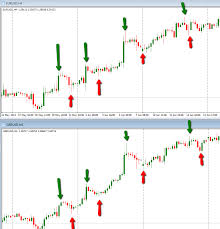- March 28, 2020
- Posted by: Kh Ng
- Category: Forex Trading

Correlation in Forex Trading: What You Need To Know
Most Forex traders give no consideration to correlation when trading; however, it plays a great role in their overall performance without their knowledge. Have you ever wondered why currency prices seem to go positive or negative at the same time?
This is because possibly without knowing it you are doubling, tripling or simply taking your account to the limit without knowing it.
Come on; let’s get to know about correlation in Forex.

Explanation of currency correlation
When you hear correlation what has to come to mind is how and when prices move. More specifically how prices move in relation to each other. This is the main idea of correlation. How does EUR / USD move in relation to GBP / USD?
Types of correlations
Currency pairs can be correlated either positively or negatively; let me explain what I mean. A pair of currencies can be positively correlated if their values move in the same direction and at the same time. For example, you can see this often in GBPUSD and EURUSD pairs.
The correlation is negative if two or more currency pairs that operate in opposite directions at the same time, that is, simultaneously. This can also be seen in the case of the USDCHF and the EURUSD, since when the first pair is trending up, then the second pair falls.
Correlations are not constant
It is important to know that the correlations can change, due to the sentiment and global economic factors, to their dynamism or any market event. This means that the correlations you find in the market today, regardless of how strong they are, may not be in line with the long-term correlation between the two currency pairs
Normally the present changes in the correlations are based on divergent monetary policies, also the sensitivity of a certain currency pair to commodity prices, etc.
Forex strategies and correlation
The effect of correlations is vital and significant in the market, therefore as a trader you must take it into account when trading. Traders should rebalance their portfolio by replacing a few assets that become positively correlated with other assets that are negatively correlated with each other.
When this occurs, the movements in the price of assets are mutually canceled and this reduces the risk on your account. However their returns are also reduced.
Important aspects regarding correlation and Forex trading
With the correlation you can assess the risk to which your trading account is exposed. In the event that you have purchased multiple currency pairs that have a strong correlation, then you will be exposed to increased directional risk.
Commodities, currencies and correlation
Commodities also show correlations with currencies. For instance there is a positive correlation between the Canadian dollar and oil since Canada is a major oil-producing country.
The Australian dollar and gold have a positive correlation, due to Australia’s imports of this precious metal.
However, gold and the US dollar show a negative correlation. Since when the USD begins to lose value in the classic times of inflation, then investors look for a reserve currency alternative and the most traded is gold, since it acts as a store of value.
How correlation coefficients are calculated
Correlations can be quantified and it is done through a scale that varies from +1 to -1. 0 or close to zero means there is no correlation. This means that two pairs do not have correlation and will not show similar behavior in regards to price movement.
+1 or an approximate value implies that two currency pairs will always move in the same direction.
-1 or close, the negative correlation. These currency pairs will move in opposite directions.
Cons of trading using correlation in the Forex market
- Sociopolitical problems cause currency pair correlations to undergo sudden changes.
- The drop in oil and commodity prices has also caused previously weaker correlations to become stronger in certain currency pairs which involve the commodity currencies.
- Sudden changes in the correlations can usually present significant risks in the currency market and that has affected traders who based their strategies on this. In the case of exploiting this type of inefficiencies, it is important to have specific points where to leave the position or close it.
Conclusion
For you as a trader, studying asset correlation closely gives you a broader understanding of the market, as you can understand asset allocation that aim to combine those that have a low or negative correlation and in this way you can decrease the risk in your trading.
